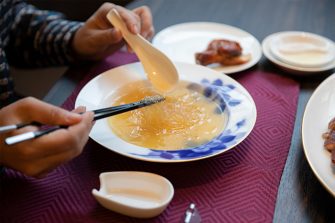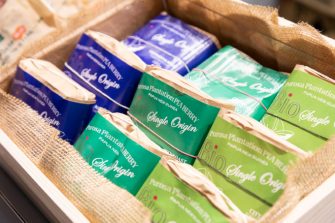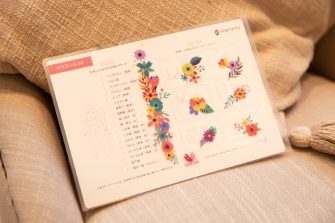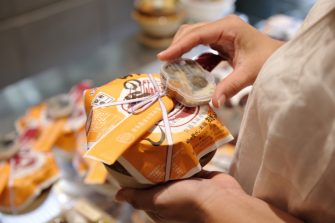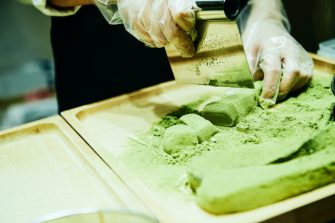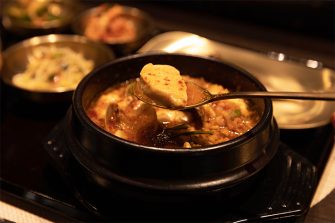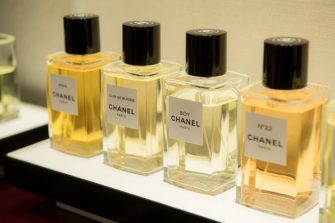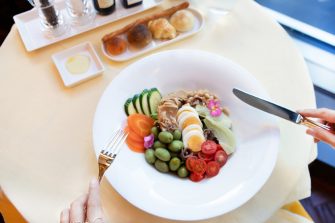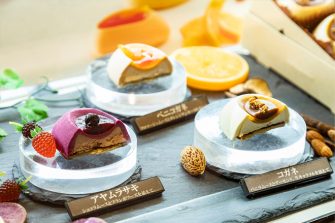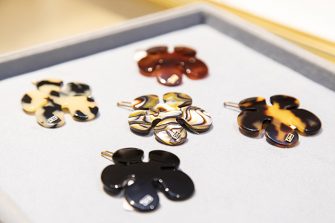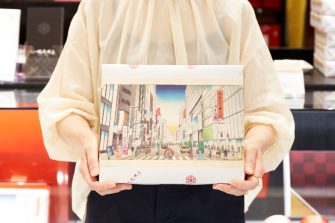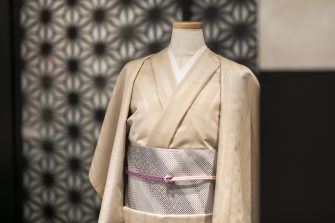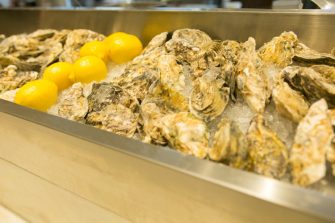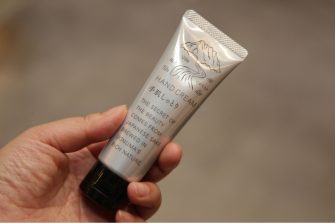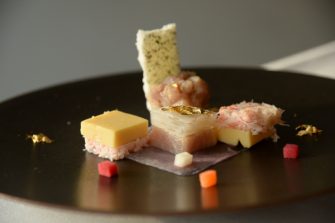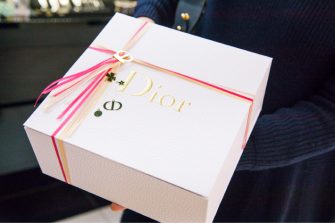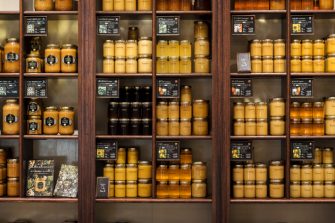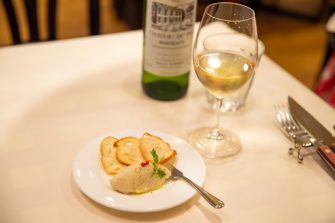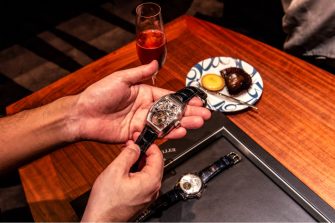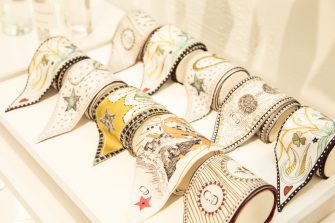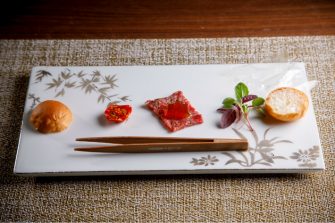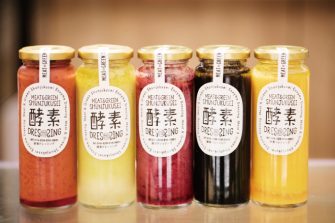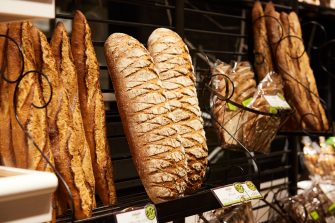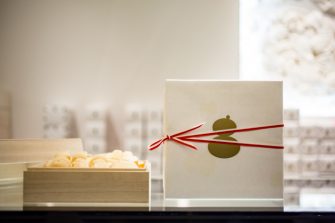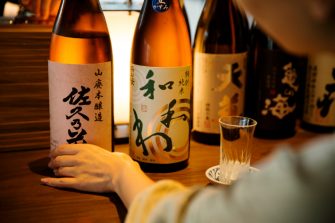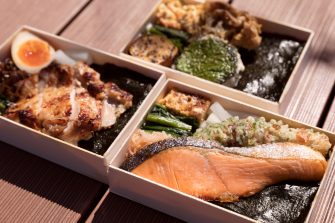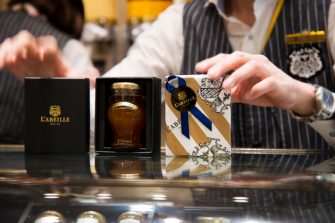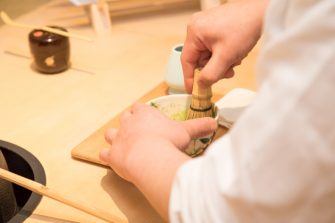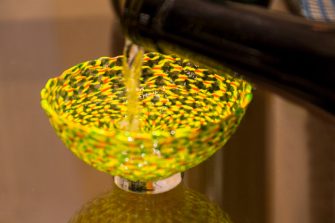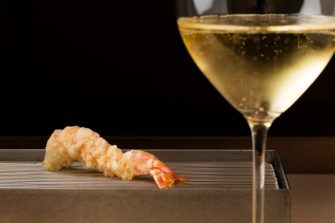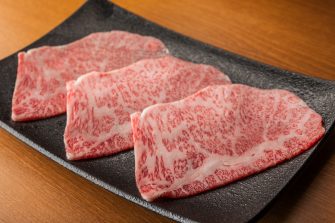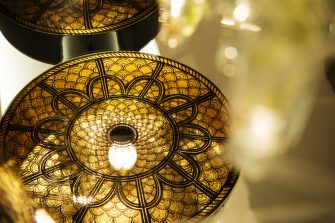

GINZA SIX EDITORS
ファッション、ジュエリー&ウォッチ、ライフスタイル、ビューティ、フード…
各ジャンルに精通する個性豊かなエディターたちが、GINZA SIXをぶらぶらと
歩いて見つけた楽しみ方を綴ります。
背伸びする銀座、リアルに使う銀座。その両方がここにある The Inspiring Ginza, The Accessible Ginza: They’re Both Here
日紫喜 康一郎
GINZA SIX EDITORS Vol.20(Food)
大学を卒業して、最初に入社したのが「主婦の友社」という中堅の出版社だった。とにかく編集者になりたかった僕としては、何とか潜り込んだ会社だったが最初に配属されたのが、女子大生向けの女性ファッション誌「Ray」。
何もかもが初めてで、容量の悪い僕は常に怒られていた。それを見かねた当時の編集長が、とある昼に誘ってくれたのが、主婦の友社から歩いて5分ほどの「山の上ホテル」だった。「てんぷら山の上」のランチは、それはそれは美味しかった。学生気分の抜けない僕にとって、それは初めての「ファインダイニング」だったかもしれない。
あれから17年たち、今回の話をもらった。「『GINZA SIX』の中のレストランで、どこかリコメンドしてくれませんか?」と。真っ先に頭に浮かんだのが、そう、ここ「てんぷら山の上 Ginza」。
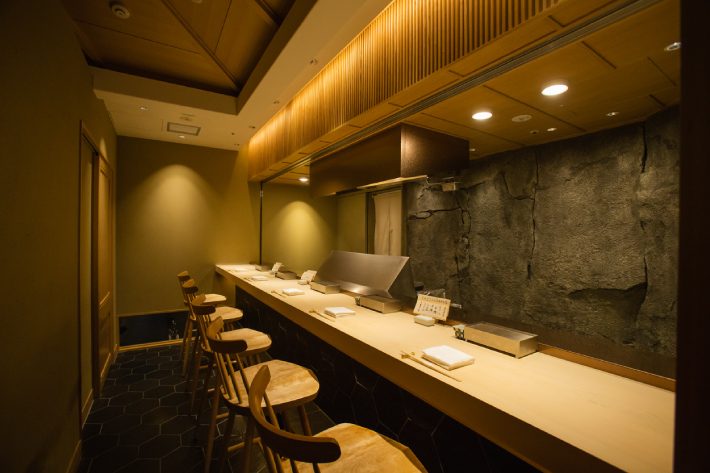
通されたのは白木のカウンターが美しい個室。利用料は1室2万円(以下全て税抜価格)と安くはないが、6人まで入れ、天ぷら職人を独り占めできる空間は、一度は体験する価値がある。
否が応でも、期待感が高まる。そして、今回の揚げ手は寺岡調理長。
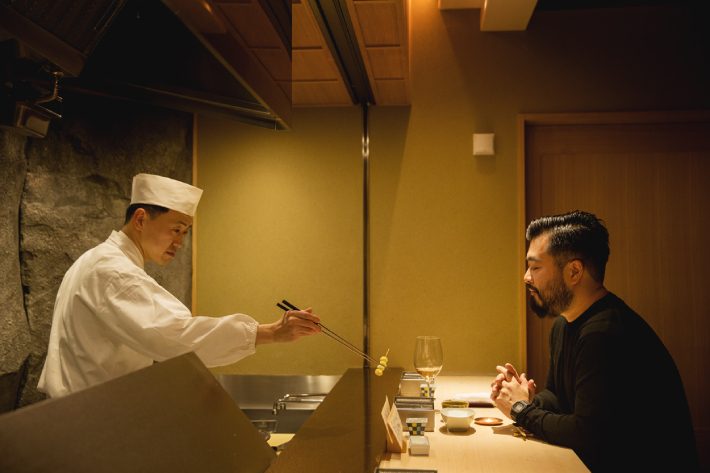
「今日は、僕に任せてほしいんですよ」
そう語った寺岡氏に、すべて身を委ねる。

まずは車海老の頭。焙煎の浅いごま油でカラッと揚がったそれは、芳ばしく甘い。
車海老は仮死状態にし数時間寝かせることで、甘さが出るのだとか。
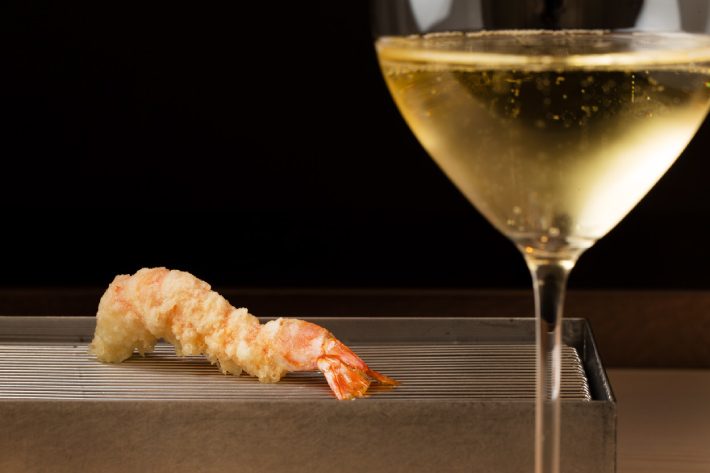
合わせるのはシャンパーニュ。寺岡氏がセレクトしたのは「パスカル・ドケ」の ブランド ブラン。
今年、シャンパーニュ地方へ取材で向かったこともあり、特に、「和食とシャンパーニュのマリアージュ」に興味があった僕は、その相性の良さに驚嘆した。何度も恐縮だが、海老が甘い。甘く感じられる。プリっとした海老も好きだが、ここまで甘く感じられる海老も捨てがたい。
とある取材で「天ぷらは蒸し物だ」と聞いたことがある。衣の中で、食材を蒸すのだ。それが改めて、分かったような気がした。
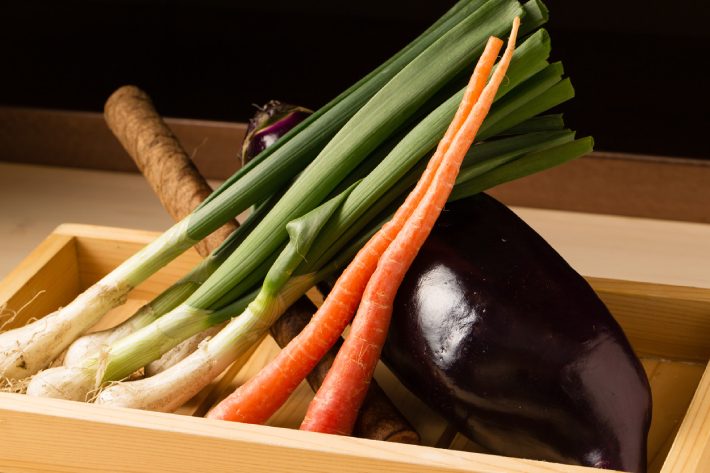
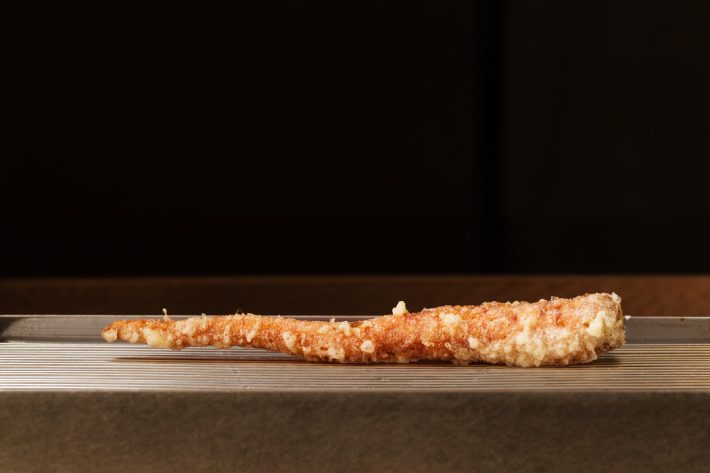
そして、野菜。早採れの京人参は細く長い。人参は先から端まで部位によって味が違うので、それが一度に食べられるというわけだ。
「山の上」出身の「天ぷら近藤」の人参も初めて食べた時、感動したものだが、この京人参はビジュアルとともに、また新しき食体験。海水を薪窯で煮ることで粒子にあえて不揃いさが出た塩をつけて食べれば、これまた甘さが口いっぱいに広がる。
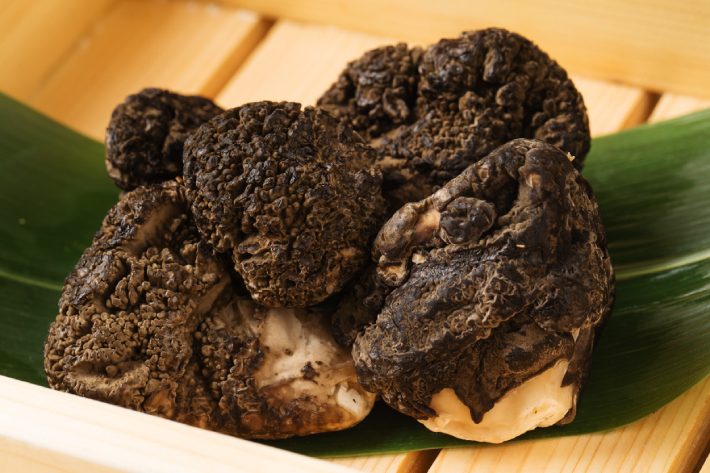
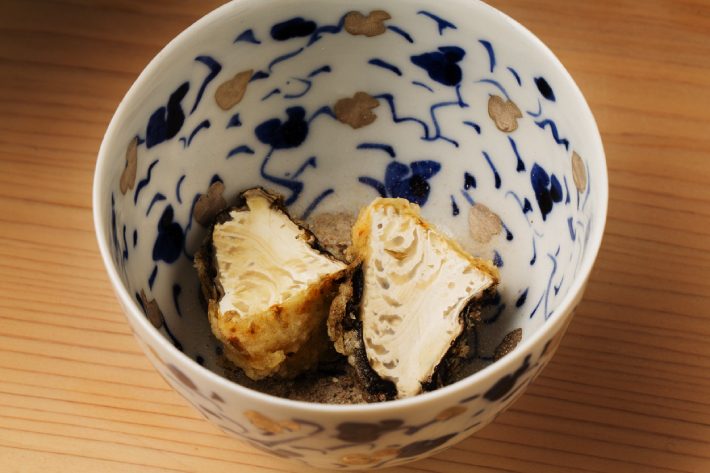
これは黒舞茸の芽。銀座店しか食べられない逸品だとか。寺岡氏の肝入りで入手した稀少食材だ。器もその香りを楽しむために特注。ブルゴーニュグラスのように、鼻を近づければ舞茸特有の香りが広がる。遊び心、そして確かな職人の腕。カウンターに座る者を魅了する所以はそこにあるのだろう。
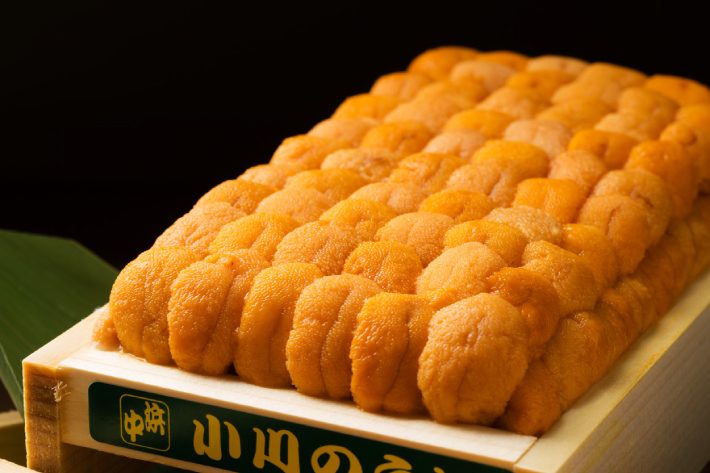
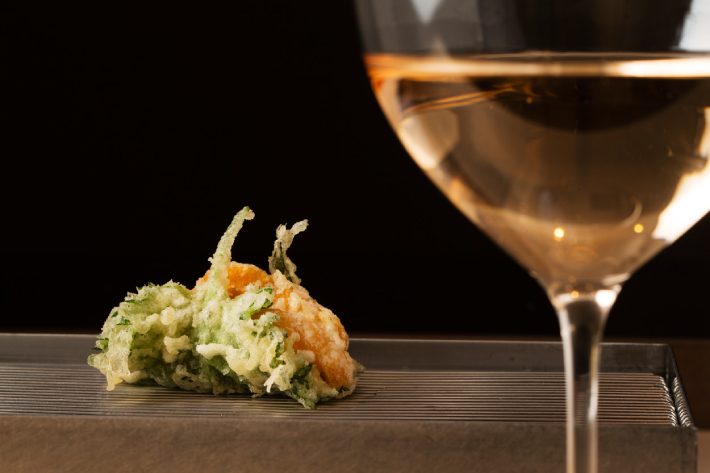
そしてウニ。「このウニのベットに飛び込みたい」とは帯同したエディターの弁だが、その通りだろう。築地では鮨屋と取り合いになるネタの数々。大葉とともにじっくりと揚げたウニの天ぷらはロゼワインで。「至福」という言葉以外、思い浮かばない。

最後は、僕の天ぷら屋で〆のお決まりとでもいうべき天茶。ご飯の上にかき揚げが乗せられ、そこにダシで淹れた煎茶でいただく。
満腹、でも苦しくない。「まだ、いけそうかな?」ぐらいが、正しき高級天ぷら屋の食後感だろう。
寺岡氏と挨拶をかわし、店を出た。僭越ながらも、僕と「山の上」の縁のようなものを感じていた。
一方で、東京の街は日々、発展していて、銀座一強の時代はとうの昔に終わった気がする。「歳をとってからでいい」「敷居が高そう」、僕は41歳だが、我々世代が、どんどん銀座から離れている気がしてならない。
だが、銀座が醸し出す「特別感」から目を背けていいのだろうか?「特別」がなければ、逆に日常が日常でなくなる。
銀座が魅力的でなくなったら、東京で生きていくことはつまらないのではないか?探せば、若い世代もリアルに使える銀座はあるのではないか?
そう思って、先日発売した東京カレンダー2月号は作った。タイトルは、そのまま「私たち世代の銀座」。

表紙は「GINZA SIX」のエスカレーターで撮影させてもらった。この雰囲気こそが、我々世代の銀座を象徴すると思ったから。
そして色々、銀座についてリサーチしていくにあたり、見つけたのが、今回ご紹介する「Salt grill & tapas bar by Luke Mangan」。
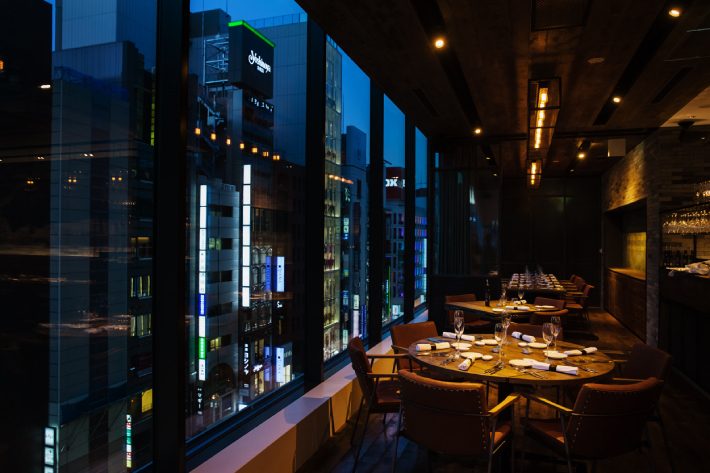
中央通りに面したテーブルが特等席。向かいの「フェラガモ」のネオンがまぶしく銀座らしい。
ここは、モダン・オーストラリア料理の第一人者、ルーク・マンガン氏が手掛けるレストラン。オーストラリアはとにかく食材の宝庫。そして移民の国ということもあり、様々な料理がミクスチャーされ、独自の食の世界を展開している。それがここで頂ける、というわけだ。
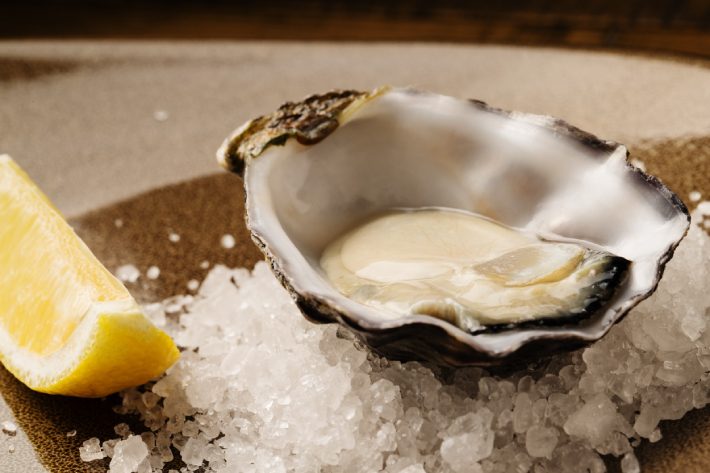
まずはフレッシュオイスターから。シンプルにレモンを絞って。肉厚で旨みも凝縮されたそれには、白ワインがよく合う。
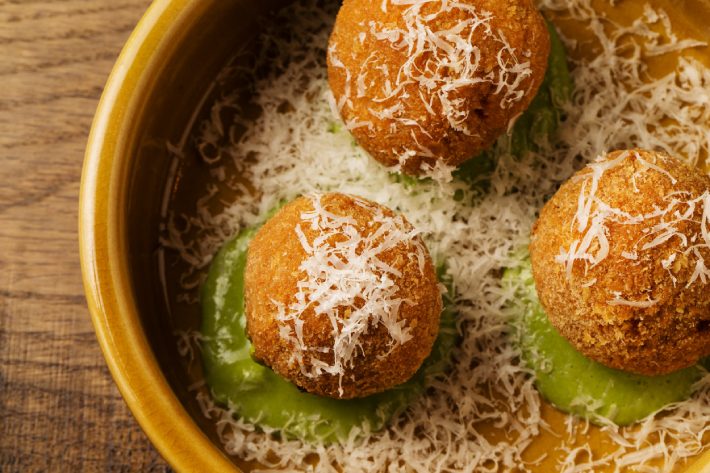
こちらはライスコロッケにアボガドのソースを添えた「マッシュルームアランチーニ ゴッデスドレッシング」。
生牡蠣もライスコロッケも600円。ここはそういったタパスが充実していて、サクッと飲めるのがポイント。平日の夜、下手な居酒屋で管を巻いているよりも、お安く、そしてスタイリッシュに飲める。入口付近のカウンターなら、ひとり飯でもいいだろう。このノリこそが、「私たち世代の銀座」だと思っている。

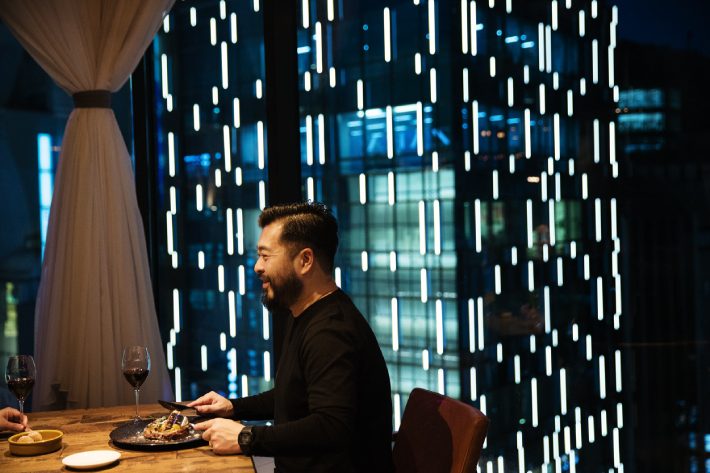
そしてメインで選んだのが「バスチャーフェッドビーフのリブアイのグリル」。オージービーフと聞くと、そのクオリティに疑問を抱いたのは昔の話。今は、相当に美味い。こちらの「バスチャーフェッドビーフ」は、牧草のみを食べて育つグラスフェッドビーフの進化版。栄養価の高い牧草のみを食べて育った牛なのだ。
味わいの感想は、一言でいうと「ヘルシーそう」。ただ、パサパサしたところはなく、ジューシーで旨みも十分。でも、軽いのだ。
古き銀座のステーキといえば、サシが入りまくった豪奢な和牛のそれ、だろうが、これは対極にある。今の若い世代のニーズに寄り添っている。
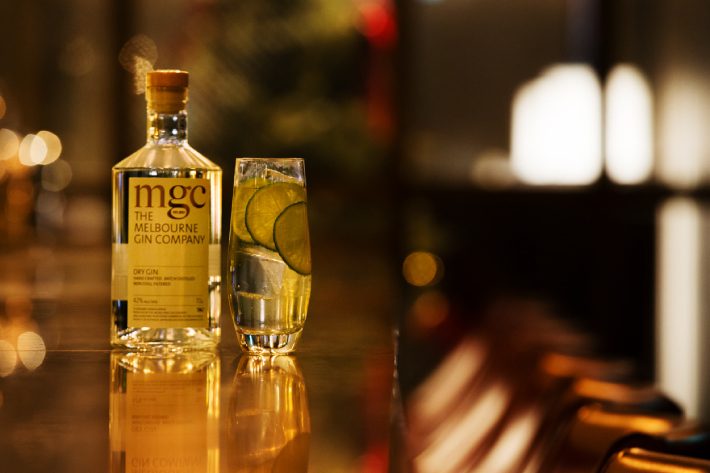
最後は「MGC(メルボルンジンカンパニー)」で作ったジントニックを。クラフトジンとかクラフトビールにも、今の時代の風を感じるものだ。
今の世代の銀座は、一世代上の大人たちが一番エネルギッシュだった30歳代の時に作ったもの。ならば、私たち世代の銀座は「今から」作る。特別感はありながらも、我々にフィットする銀座はある。そんな銀座は、30年後、若者たちの憧れとなるだろう。そして、我々は言う「この銀座をつくったのは私たちだ」と。
「Salt grill & tapas bar by Luke Mangan」を取材して、改めてその気持ちを強くした。
Text:Koichiro Hishiki Photo:Kazuhiro Fukumoto Edit:Yuka Okada
The first company I worked for after college was SHUFUNOTOMO, a medium-size publishing house. I wanted to be an editor. Somehow, I got my foot in the door, but I was assigned at first to Ray, a women’s fashion magazine targeting college students.
It was all new to me. I’m not the world’s fastest learner, so people were constantly upset with me. The editor-in-chief at the time was unable to remain on the sidelines, so I was invited one day to lunch. We went to the Hilltop Hotel, a five-minute walk from the SHUFUNOTOMO offices. The lunch at Yamanoue, the hotel’s tempura restaurant, was revelatory. I was still living like a college student, so, that, perhaps, was my first ever fine-dining experience.
Seventeen years later, I received the following inquiry: I was asked to recommend a few restaurants at GINZA SIX. I immediately thought of Tempura Yamanoue Ginza.

Today, visiting this Yamanoue spin-off at GINZA SIX, I found myself led to a private room with a beautiful, unadorned wood counter. The room fee is 20,000 yen (all prices given are before tax). This isn’t inexpensive, but the space seats six and gives diners exclusive access to a highly skilled tempura chef. It’s worth experiencing at least once.
Today’s tempura is prepared by Chef Teraoka. The anticipation is palpable.

“Today, I ask that you leave everything to me,” says Chef Teraoka. So that’s exactly what I do.

The first dish is a kuruma prawn head. The kuruma prawns have been set aside for several hours in a state of suspended animation, a process that brings out the sweetness. Deep-fried in lightly roasted sesame oil, they’re crisp, pleasingly aromatic, and sweet.

The prawns are paired with a champagne. For me, Chef Teraoka selects the Pascal Doquet Blanc de Blancs.
Apropos of this choice of wine, I visited the Champagne region of France just this year to do some research. I happen to be especially interested in the pairing of champagne with Japanese cuisine. I found the affinity in this case was especially impressive. To repeat, the prawns are sweet, remarkably so. I like chewy prawns as well, but prawns this sweet are a delight.
Once, while doing research for another article, I overheard someone describe tempura as a steamed dish: The food is steamed inside the batter, an interesting concept I feel I’ve come to understand anew today.


Next up is vegetables. The early-harvest Kyoto carrots are long and thin. Carrot flavor varies from tip to end. Here, you experience the entire gamut in a single sitting.
When I first had the carrots at Tempura Kondo, another spin-off from Yamanoue, I was duly impressed. But these Kyoto carrots served here at Ginza, in both taste and appearance, represent a new culinary experience. Sprinkled with irregularly sized grains of salt made by seawater boiled in a wood-burning kiln, they fill your mouth with sweetness.


These are kuromaitake mushroom buds, a rarity available only at the Ginza restaurant obtained painstakingly by Chef Teraoka. The bowl itself is a special-order item designed to concentrate aroma. In much the same way a burgundy glass accentuates a wine’s nose, this vessel ceremoniously presents the distinctive mushroom aroma. A sense of whimsy and the chef’s sure hand—perhaps it’s this that mesmerizes patrons at the counter.


Next is sea urchin. “I want to dive into this sea urchin’s bed,” is what the editor who’s with me says, and I wholeheartedly agree. I can imagine the pitched battles at Tsukiji Market as sushi establishments seek to get a hold of these sea urchins. Sea urchin tempura carefully deep-fried with shiso leaves, paired with rosé wine—ambrosial is the word that comes to mind.

Finally, I go with tencha, my old standby for a closing dish at tempura restaurants. The rice is topped with kakiage and covered with a sencha green tea brewed in dashi soup stock.
I’m full, but not overly so, as if I could have a bit more. That feels just right for a high-end tempura establishment.
I thank Chef Teraoka and exit the restaurant. Perhaps it’s presumptuous to think so, but in this moment, I feel a special connection to Yamanoue.
With each of Tokyo’s districts continuing to evolve daily, I sometimes get the sense that the days of a Ginza at the very pinnacle of things are in the distant past. Beyond this, I can’t help feeling that my own generation—I’m 41—has gradually drifted away from Ginza: Ginza is something for when you get older, or it’s unapproachable, or something.
But do we lose anything if we turn away from the distinctiveness so artfully cultivated at Ginza? Without distinctiveness, the everyday ceases to be everyday.
If Ginza loses its appeal entirely, wouldn’t life in Tokyo lose a significant part of its charm? If one goes looking, is there a Ginza that’s accessible to the younger generation?
Based on the belief that there is, I created the February edition of Tokyo Calendar, published recently with the title “Our Generation’s Ginza.”

I took the cover photo on the escalators at GINZA SIX. The atmosphere itself, I thought, symbolized the Ginza of our generation.
In exploring various Ginza locations, I discovered the restaurant I’m going to tell you about now, Salt grill & tapas bar by Luke Mangan.

The tables facing Chuo-dori offer the best seats in the house, and the bright neon of the Ferragamo store across the way creates a very Ginza vibe.
The restaurant is overseen by Luke Mangan, a star of modern Australian cuisine. Australia is a treasure trove for ingredients. It’s also a nation of immigrants. Various cuisines have fused and created a unique culinary culture, of which this restaurant presents a taste.

The first dish is fresh oysters with lemon wedges. They’re meaty and full of flavor, and they go well with the white wine.

This is the Mushroom Arancini Goddess Dressing, which consists of rice croquettes with avocado sauce.
The oysters and rice croquettes are both 600 yen. The restaurant features many tapas-style dishes like this that go well with casual drinks. On a weekend night, rather than grousing over drinks at a low-end izakaya-style bar, you can have drinks here, inexpensively and in style. There’s a counter near the entrance, so drinking alone works as well. That seems to me very much in the spirit of Our Generation’s Ginza.


For a main dish, I chose the pasture-fed beef rib-eye grill. Potential doubts about quality when you hear Aussie beef is a thing of the past; this is remarkable. Pasture-fed beef represents another stage in the evolution of grass-fed beef; the cattle are raised on an exclusive diet of nutrient-packed grass.
The flavor, in a word, appears to strike a healthful balance. The meat is free of any dry patches. It’s juicy and flavorful, without being heavy.
With a traditional Ginza steak, one thinks of premium, marbled Japanese wagyu. This is the polar opposite, something closer to the preferences of today’s younger generation.

To close, I have a gin and tonic made with MGC (Melbourne Gin Company). The craft gins and craft beers also suggest the mood of our times.
The Ginza of the current generation was created by a preceding generation of individuals in their 30s, at the height of their powers. The effort to build our generation’s Ginza has just started. There’s a Ginza that retains the Ginza distinction but works well for us, and it’s something that will inspire a generation of young people 30 years from now. And we’ll be able to say we helped create it.
My experience at Salt grill & tapas bar by Luke Mangan reinforces this perspective.
Text:Koichiro Hishiki Photo:Kazuhiro Fukumoto Edit:Yuka Okada
日紫喜 康一郎
「東京カレンダー」編集長。1976年生まれ。慶應義塾大学を卒業後、主婦の友社「Ray」編集部にて経験を積んだのち、主婦と生活社「LEON」編集部へ。2013年から食を中心としたライフスタイル誌「東京カレンダー」に移籍し、2017年から編集長を務める。


